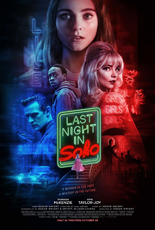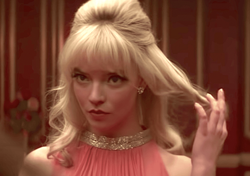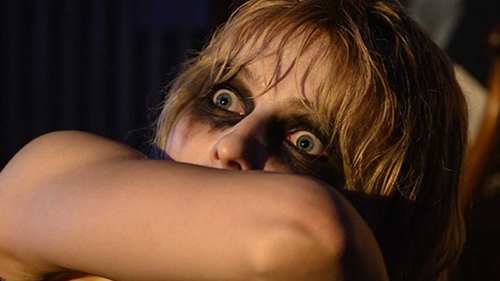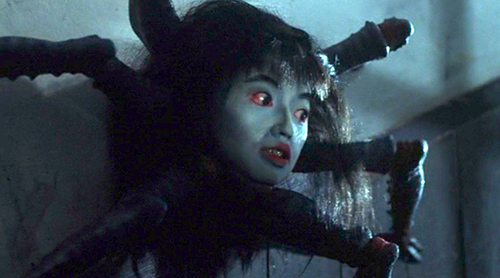
 Nostalgia is a powerful narcotic, especially in these COVID-riddled, globally warming times seemingly spinning out of control. With such a crummy present and a future too terrifying or unknowable, we comfort ourselves that the past — or at least a fictitious version of the past we yearn for — was better, simpler or maybe just cooler. In Last Night in Soho, a mostly successful psychological horror picture, such romanticism has taken hold of Eloise “Ellie” Tucker, a young woman who moves from the English countryside to London fashion school with a head swimming in the Swinging Sixties’ music and fashion.
Nostalgia is a powerful narcotic, especially in these COVID-riddled, globally warming times seemingly spinning out of control. With such a crummy present and a future too terrifying or unknowable, we comfort ourselves that the past — or at least a fictitious version of the past we yearn for — was better, simpler or maybe just cooler. In Last Night in Soho, a mostly successful psychological horror picture, such romanticism has taken hold of Eloise “Ellie” Tucker, a young woman who moves from the English countryside to London fashion school with a head swimming in the Swinging Sixties’ music and fashion.
But as William Faulkner famously observed, “The past is never dead. It’s not even past.” Or, as the almost-as-literate Billy Joel later put it, “The good ol’ days weren’t always good.”
Ellie isn’t your typical fashion student. First, she is winningly played as a wide-eyed ingénue by Thomasin McKenzie (Jojo Rabbit). Second, Ellie has psychic abilities, as evidenced by her penchant for seeing her deceased mum’s reflection in mirrors. Ellie’s doting grandmother (Rita Tushingham) cryptically references some past incident where such visions might have been overwhelming, but the granddaughter just shrugs it off and hurries to the mod London of her dreams.
The Carnaby Street of yesteryear is long gone. Instead, Ellie is met by a reality of alienating dorm parties, leering old men and a particularly mean-girl roomie (Synnøve Karlsen) who prompts our heroine to rent a room in the flat of an elderly woman (Diana Rigg of ’60s-era TV phenomenon The Avengers) in a nearby neighborhood.
Things start to look up. Even Ellie’s sleep gets exciting. In her dreams, she is introduced to the beautiful and sophisticated Sandy (Anya Taylor-Joy, TV’s The Queen’s Gambit), an ambitious singer determined to make her mark in 1960s Soho. Director Edgar Wright (Baby Driver) and cinematographer Chung-hoon Chung, as enamored of the past as Ellie, envelop their dreamscape London in sumptuous color, while the soundtrack is punctuated by the period pop of Dusty Springfield, Petula Clark and Cilla Black.
 But don’t forget what Joel cautioned about the good ol’ days. Ellie’s dreams take a sharp turn as Sandy falls for a smooth-talking manager (Matt Smith) and gets an up-close-and personal experience with Soho’s seamy underbelly. As the proceedings grow darker, Ellie’s dream world begins to spill over into her waking life.
But don’t forget what Joel cautioned about the good ol’ days. Ellie’s dreams take a sharp turn as Sandy falls for a smooth-talking manager (Matt Smith) and gets an up-close-and personal experience with Soho’s seamy underbelly. As the proceedings grow darker, Ellie’s dream world begins to spill over into her waking life.
Last Night in Soho is most fun when Ellie and her glamorous doppelgänger explore 1960s London through a series of dazzling set pieces. Wright, a professed cinephile, pays homage to films of that period by using iconic Brit actors Rigg, Tushingham, Terence Stamp and Margaret Nolan, the gold-painted Bond girl of Goldfinger’s title sequence. The nostalgia narcotic proves to be an irresistible high.
Up to a point, that is. The stakes keep rising, but Wright and co-scripter Krysty Wilson-Cairns 1917) might have written themselves into a corner with a preposterous third act that dampens a little of the exuberance preceding it. I can forgive it, though; two-thirds of a great movie is nothing to dismiss, especially if you’re watching through rose-colored glasses. —Phil Bacharach










